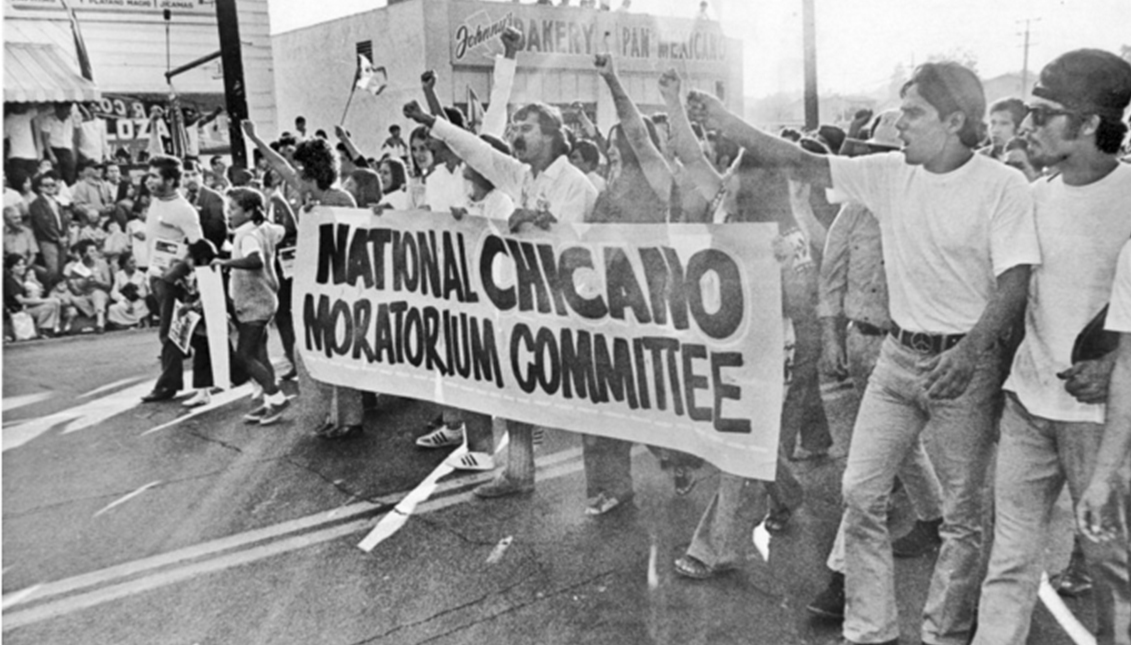
The route of the Chicano Moratorium enters the National Register of Historic Places
The massive protest in 1970 against the Vietnam War ended in a violent battle and is commemorated every year. From now on, the streets will remember.
"Stop the Chicano genocide!"
This and other slogans emblazoned banners carried by some 30,000 people who gathered in East Los Angeles' Belvedere Park on the-now notorious date of August 29, 1970, when Aztlan made all the difference.
Organized by university activists like Rosario Muñoz and Ramses Noriega, co-founder of the influential newspaper La Raza, and with the participation of the Chicano women's movement faction, the Brown Berets, protesters rallied around the large number of young Mexican-Americans sent to war by President Richard Nixon after being recruited by virtue of poverty and lack of opportunity. Many returned home in coffins.
However, no one could have imagined that the anti-war protest would end in a pitched battle, when deputies began charging into the crowd, resulting in a large number of injuries and the death of three people, including journalist Ruben Salazar. At the time, he was at the Silver Dollar Café and was killed by a tear gas canister fired by the police.
Today, Laguna Park — where the march and annual commemorations end — is named Ruben Salazar Park in his honor.
But it's the streets that are the silent witnesses of history.
The asphalt keeps the memory of the events that happened and that vaguely reminds some young Chicanos that pass through Los Angeles without realizing there were others that fought for them.
As heirs, they must also pick up the baton of the struggle.
To recognize the importance of the street, the route of the Chicano Moratorium was recently recognized by the National Register of Historic Places as part of a legacy that must be marked and vividly remembered. It comes as demonstrations for racial justice throughout the country are highlighting the dark history of the country that keeps repeating itself.
RELATED CONTENT
The official recognition of the protest route, which ran from Belvedere Park south of Arizona Avenue and then west along Whittier Boulevard, also included other key sites linked to the march such as the El Barrio Free Clinic — now Mission Furniture Manufacturing — which was launched by the Brown Berets in the late 1960s.
The site of the Silver Dollar Café is also recognized, and is now a record store.
The list also included the route of the earlier 1969 Vietnam moratorium, which began at Five Points Memorial in Boyle Heights (on one corner of Evergreen Cemetery) and went down Michigan Avenue to Obregon Park.
Chon Noriega, professor and director of the UCLA Chicano Studies Research Center, put into perspective the importance of such a recognition on its 50th anniversary.
"The Chicano Moratorium, like the East Los Angeles Marches for Better Education in 1968, was met with excessive police violence. But with the Chicano Moratorium, the police also shot and killed the most prominent Chicano journalist of the time, effectively silencing a crucial voice for social justice that reached the mainstream. Neither the courts nor the Los Angeles Times (where Salazar had worked) challenged the use of deadly violence against a journalist," he told AL DÍA. "Looking at the current situation with Black Lives Matter, it is clear that little has changed for Native Americans, African Americans, and Latinos. These groups continue to be killed by police at much higher rates than whites. And as the current protests have continued in cities across the country, police have also begun to attack journalists."
In this case, looking back is, in turn, opening up new roads to the future.











LEAVE A COMMENT: